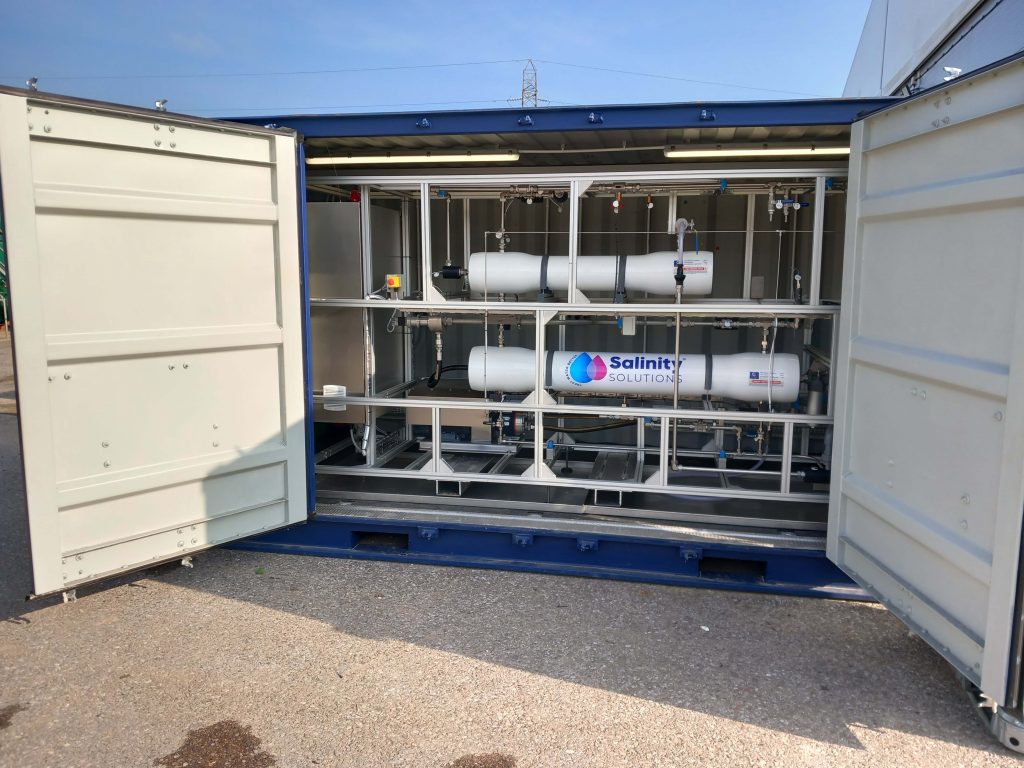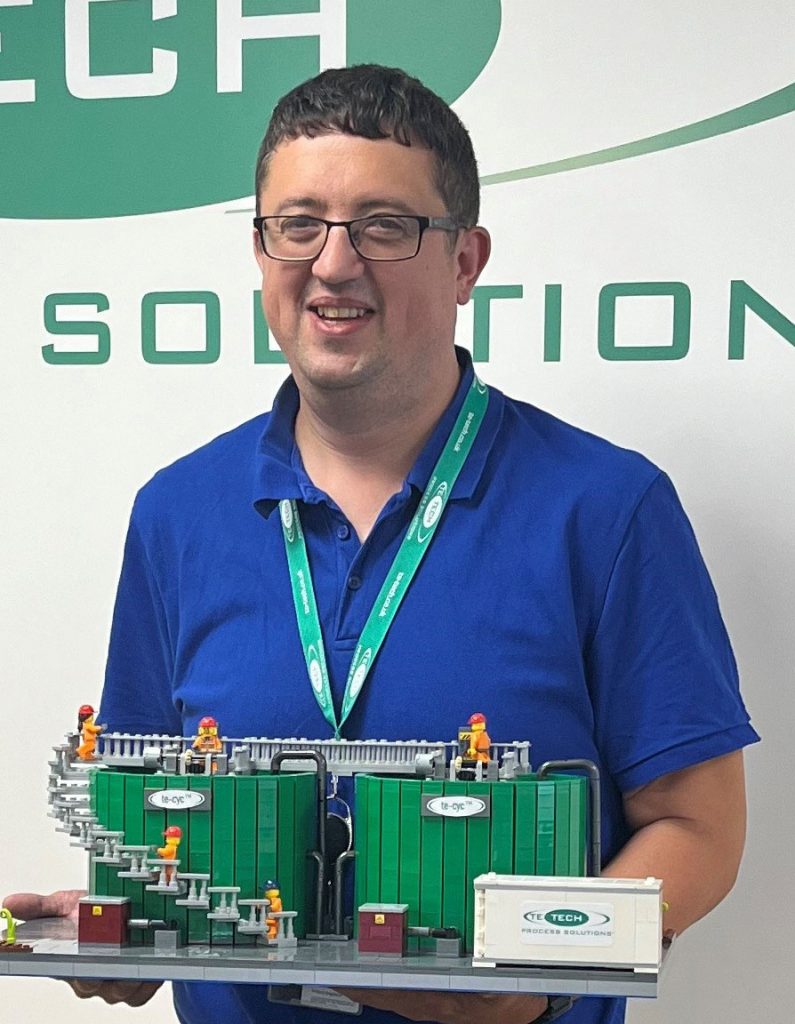Reducing industrial water usage will be critical to tackle future water stress and supply issues. The answer lies in efficient water reuse and recycling, and new reverse osmosis technology could play a huge part.
Process industries are among the largest consumers of water. As well as process use, utilities such as cooling, steam raising, and heat transfer also consume huge amounts.
For many of these applications, potable water quality is not enough, and additional treatment of municipal water supplies is also required.
For example, in the food and drink sector, water may need softening, de-alkalisation or nitrate removal. In the process of pharmaceutical manufacture, compliance with pharmacopeial water quality is required. High pressure boilers need part per billion purity, and semiconductor manufacturing water is several orders of magnitude purer.
Over the last four decades, reverse osmosis has become the preferred option for water treatment in the process industries, either as stand-alone or as the first stage of a high purity water production system.
However, reverse osmosis uses a significant amount of energy and generates, typically, about 25% wastewater. Improving energy consumption and reducing wastewater not only improves sustainability and saves money but also contributes to a reduction in water footprint.

Reverse Osmosis
Reverse osmosis is a pressure driven membrane process that relies on a semi-permeable membrane which allows the passage of water molecules but rejects dissolved salts depending on size and ionic charge. Thus, divalent calcium and sulphate ions are more highly rejected than monovalent sodium and chloride ions.
The first synthetic membranes were developed in the 1960s, these anisotropic cellulose acetate membranes were demonstrated in a 0.1 Ml/d pilot plant treating brackish water in California. Sixty years on, cellulose acetate membranes are still used in some water treatment applications, but polyamide composite membranes are more common. Both are manufactured as flat sheets and packaged as industry-standard spiral wound elements, which are all interchangeable.
Today, reverse osmosis is the most widely used water treatment technology around the world. It produces more than 50% (25,000 Ml/d) of desalinated water and is used for water purification in many industries from food and beverage to power generation and produces the high purity water vital to the manufacture of pharmaceuticals and semiconductors.
The water that passes through the membrane is collected as permeate, whilst salts removed from the feed water are sent to waste as a concentrated reject brine stream. The ratio of permeate to feed is called the recovery.
For sea water with a salinity around 35,000mg/l, recovery is typically around 50% and feed pressure around 60bar: for fresh water with salinity less than 1000mg/l, recovery is around 70% with a feed pressure of about 15bar. Generating these feed pressures is the principal operating cost of reverse osmosis.
Newly developed batch reverse osmosis technology can reduce energy consumption by 50%, and with high recovery, reduces wastewater by up to 80%
Advancements Allow Higher Recoveries
The conventional reverse osmosis process operates in a steady state, configured so that the reject brine provides a cross flow in the turbulent regime to minimise concentration polarisation, a build-up of brine concentration in the reject stream which increases osmotic pressure.
This opposes the driving pressure and reduces permeate flux. This continuous process has been accepted largely uncontested, although batch and semi-batch modes have been the subject of engineering research.
In these modes, the membrane is operated in a “dead end” mode until concentration polarisation begins and then waste brine is discharged. This allows higher recoveries but involves high operating pressures.
New Batch RO Technology
Newly developed batch reverse osmosis technology can reduce energy consumption by 50%, and with high recovery, reduces wastewater by up to 80% compared to conventional reverse osmosis systems[1].
The technology, for which a European Patent Application has been granted, makes use of a specially designed “pressure exchanger” and is suitable for applications including desalination, wastewater treatment and recovery, and industrial process and utility water recycling.
HyBatch is a fully automatic batch RO system developed by University of Birmingham spin out Salinity Solutions[2]. It consists of a high-pressure feed pump, a recirculation pump, industry standard RO modules, and a free-piston pressure exchanger that operate in a cyclic manner using only three automatic valves as shown in the flow diagram:
In the first phase of the cycle, the pressurisation phase, the feed pump applies the minimum osmotic pressure to the feed side of the pressure exchange device. This pressure is transferred to the batch of water that is being processed via the free moving piston.
The batch then passes through the membrane module, producing permeate and a reject stream. The reject stream is then recirculated into the pressure exchanger via the recirculation pump. During this process no additional feed is added. This causes an increase in the concentration of the recirculation loop.
As the concentration inside the recirculation loop increases over time, the feed pump will generate a higher pressure to overcome the increasing osmotic pressure, causing the piston to slide to the right. This allows for the average pressure of the cycle to be lower than any competing RO technology, thus reducing the energy demand.
When the piston reaches the end of its travel, the pressurisation phase ends, the automatic valves change position, and the purge-and-refill phase begins. During this phase, concentrated reject brine is discharged to waste, and the free piston moves to the left back to its original position.
Reducing water consumption is crucial to prevent water stress and ensure availability for future generations
Improved Sustainability
This cyclic operation not only reduces energy consumption but also allows a much higher water recovery and, hence, reduced waste. During a recent pilot trial undertaken at a food manufacturer in Kent[3], the system allowed wastewater from the growing process, as well as from the cleaning process, to be collected, treated and then reused.
The site spans just five acres but has the equivalent of 1,000 acres of growing space in a controlled environment. The pilot plant achieved the same quality as conventional RO but at roughly 50% of the operational cost; a major advantage in this cost-sensitive industry.
Water intensive industries, like food production, manufacturing, energy and chemical production, mining, and data centres use enormous amounts of water. Reducing water consumption is crucial to prevent water stress and ensure availability for future generations. And new, efficient RO technology can make a significant impact on sustainability of process industries, opening the door to cost effective wastewater recycling, helping reduce pressure on municipal supplies.
[1] Park K et al Design, modelling and optimisation of a batch reverse osmosis (RO) desalination system using a free piston for brackish water treatment Desalination 494 (2020) 114625
[2] Hosseinipour E et al A free-piston batch reverse osmosis (RO) system for brackish water desalination: Experimental study and model validation Desalination 527 (2022) 115524
[3] Salad grower trials new water-saving technology https://www.bbc.co.uk/news/articles/ckve938gnv7o
*Article publiished in Process Industry Informer: Reverse Osmosis Tackles Excessive Industrial Water Usage
About the author

Andy Oakley, Project Engineer
Andy is an experienced Project Engineer focusing on manufacturing, integrating, and installing water and wastewater treatment technologies for industrial and municipal projects. Andy has over 20 years’ of engineering experience with companies such as Pall Corporation, Konecranes and Alstom.